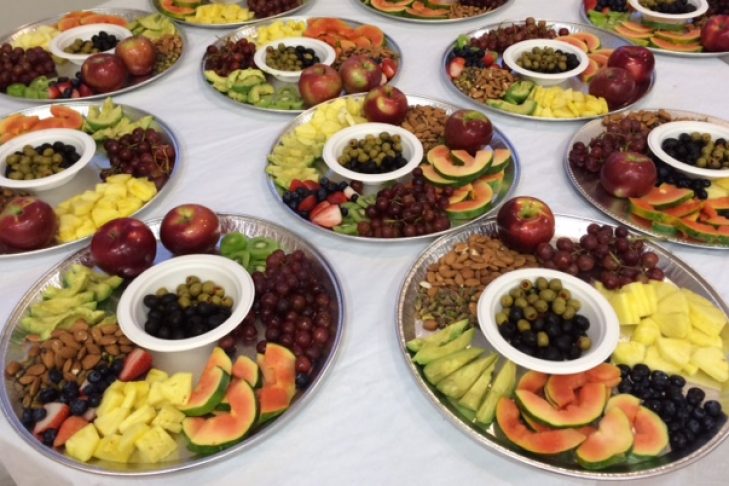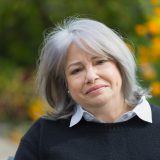Tucked between the lights of Hanukkah and the rituals of Passover is Tu BiShvat. Falling on the 15th of the Hebrew month Shevat, the holiday, according to the Talmud, celebrates the New Year of the Trees. Modern observance of Tu BiShvat emphasizes the crucial role trees play in our stewardship of the earth. One midrash explains, “If not for the trees, human life could not exist.” The late Rabbi Abraham Joshua Heschel elaborated, “It is when nature is sensed as mystery and grandeur that it calls upon us to look beyond it.”
The Tu BiShvat seder originated with the Kabbalists in 16th-century Safed, Israel. The seder, with its four cups of wine and symbolic fruits, is loosely based on the logic of the Passover seder. It is also a ceremony that, in recent years, has been a symbol of inclusion in the Boston Jewish community. For Rabbi Benjamin Samuels, who leads it each year, the Tu BiShvat seder inspires his congregation, Shaarei Tefillah, “to be maximally inclusive” throughout the year.
For almost 20 years, Shaarei Tefillah has partnered with New England Yachad and K’Sharim, a conglomerate of organizations that includes Jewish Big Brothers Big Sisters and Jewish Family & Children’s Service, to host a Tu BiShvat seder for adults of all abilities. This year, Ganei Beantown, a grassroots Jewish organization whose mission is to “coalesce efforts in the Greater Boston Jewish community to educate and engage our community in hands-on sustainable agricultural education and programs,” will be on board. The Ruderman Family Foundation, Combined Jewish Philanthropies and Orthodox Union also sponsor the seder.
“This is a unique event, and we adapted the seder to have a fun activity in the middle of the winter,” says Liz Offen, executive director of New England Yachad. “It’s a Jewish holiday very few people know about, and we wanted [this event] to become the Tu BiShvat seder for the Jewish community, in conjunction with individuals and families [who] have special needs.” The annual seder draws between 120 and 145 people.
-
Shaarei Tefillah’s commitment to inclusivity has also been manifested through its inclusion committee. Judi Roth, a co-chair of the committee and one of the organizers of the synagogue’s seder, notes: “We quickly determined that we needed more understanding and sensitivity toward people with obvious and invisible disabilities. Our job is to bring up conversations, educate people and sensitize them to inclusion.” Roth and her committee have addressed everything from mental health issues to food allergies.
Rabbi Samuels breaks down the seder into three parts: teaching, eating and an activity. The teaching and eating meld together as he talks about the four cups of wine that represent the different seasons. “We start with white grape juice,” Samuels explains, “and increase its redness over the course of the four different cups.”
There are also four symbolic fruits that have some combination of a peel and pit. For example, the first fruit one eats has a hard shell, like a walnut or pistachio, that protects the edible inside. The Tu BiShvat Haggadah that Shaarei Tefillah uses explains it represents “things that are concrete, things that are physical—you can put your hands around them, open and see what’s inside. The hard shell is like the protection we get from the earth…. Also, when we open our personal shells to those around us, we can enjoy the sweetness of our inner selves and the sweetness of our friends and neighbors around us.”
That intention, very much at the heart of the inclusion community, also drives the Tu BiShvat seder. “A lot of our participants,” observes Offen, “don’t have the opportunity to have conversations in the way that many people typically do. We help facilitate conversation and build community. High school and college students will be at the tables to talk about trees in the Torah or ecology. Among the highest things we can do is learn words of Torah together, and Rabbi Samuels brings in that very special dynamic.” Roth similarly praises Samuels’ inclusivity. “He’s been a role model for the community,” she says.
The activity that’s part of the seder can be something as symbolic as stretching to the sky and swaying in the wind like trees. There’s also dancing and music. This year, participants will be decorating a wood medallion. Offen describes the activity as “very tactile. The goal is to feel the wood and to know that it came from a tree that fell and was not intentionally destroyed.”
In the synagogue foyer, there will be a three-dimensional tree with paper leaves on which people can write notes. Offen calls it a “wishing tree for the earth. It reminds us how precious our earth is and that God created it for us to be the caretakers.”
Never miss the best stories and events! Get JewishBoston This Week.




